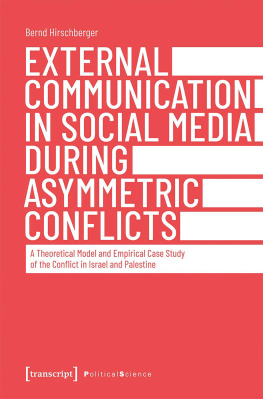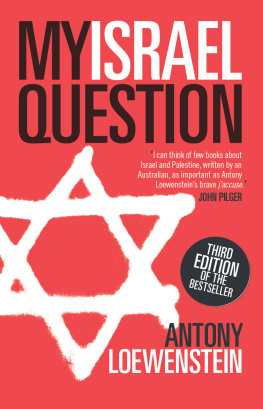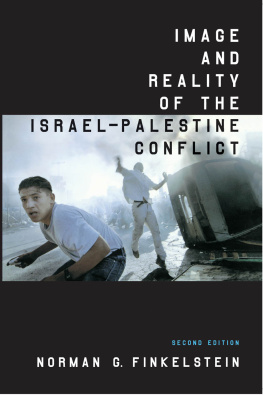Supported by a scholarship of the Cusanuswerk, the German episcopal academic scholarship foundation for outstanding catholic students within the framework of a state scholarship system for highly talented students.
Dissertation, Ludwig-Maximilians-Universitt Mnchen (University of Munich), 2020
Bibliographic information published by the Deutsche Nationalbibliothek
The Deutsche Nationalbibliothek lists this publication in the Deutsche Nationalbibliografie; detailed bibliographic data are available in the Internet at http://dnb.d-nb.de
This work is licensed under the Creative Commons Attribution 4.0 (BY) license, which means that the text may be remixed, transformed and built upon and be copied and redistributed in any medium or format even commercially, provided credit is given to the author. For details go to http://creativecommons.org/licenses/by/4.0/
Creative Commons license terms for re-use do not apply to any content (such as graphs, figures, photos, excerpts, etc.) not original to the Open Access publication and further permission may be required from the rights holder. The obligation to research and clear permission lies solely with the party re-using the material.
First published in 2021 by transcript Verlag, Bielefeld
Bernd Hirschberger
Cover layout: Maria Arndt, Bielefeld
Print-ISBN 978-3-8376-5509-4
PDF-ISBN 978-3-8394-5509-8
EPUB-ISBN 978-3-7328-5509-4
https://doi.org/10.14361/9783839455098
Introduction
1.1 Wars of words and images The effectualness of pictures and stories of war and their strategic exploitation by conflict parties
Pictures and stories of war make a difference.
In their recent contributions to the study of conflicts and peace scholars like Mary Kaldor (Kaldor 1999 & 2013) and Chistopher Daase (Daase 1999) have demonstrated that modern conflicts are complex and embedded in a global context of interactions and interdependencies. The outcome and development of a conflict, therefore, is not simply determined by the military capacities of the actual conflict parties (hard power) but is also shaped by socio-cultural factors, such as the image of the conflict parties, their credibility, the perception of shared values and moral support (soft power) (cf. also Nye 2008; Nye 2009): In the modern globalized world, many conflicts attract the attention of even those countries that are far away from the actual center of the conflict (Yarchi 2016: 291f.). This can stimulate external moral, diplomatic, economic or even military interventions by state, or private, actors (Jakobsen 1996). These interventions can have a significant impact on the course of the conflict, as they can provide valuable support for a conflict party or they can assert pressure on a conflict party. The image audiences abroad have of a conflict and its actors influences whether external actors intervene in a conflict or not. And, if external actors decide to intervene, the image of the conflict and its actors they have influences what kind of measures they choose for their intervention (cf. Kaldor 1999: 57-68 using the example of the war in Yugoslavia as an illustration; Yarchi 2016: 292f.). On the one hand, negative pictures and stories from conflict are proven to encourage mobilization against conflict parties. On the other hand, however, it is noteworthy that positive pictures and stories can also mobilize in favor of conflict parties:
Negative pictures and stories can mobilize against a conflict party.
The picture The Terror of War, a photography by Nick Ut from 08th of June 1972 shows a group of children fleeing from their home village, the village of Trng Bng. A South-Vietnamese airplane had accidentally dropped napalm on the village, an incendiary weapon said to have caused more damage than the nuclear bombings of Hiroshima and Nagasaki (Guillaume 2016: 1+7; cf. also Neer 2013). The children are fleeing from the heat and the fire the napalm had caused. In the center of the picture is a naked girl, the 9-year old Kim Phuc, later known due to the picture as the Napalm Girl. Her face shows an expression of pain and horror. She had to rip off her burning clothes while running, screaming Too hot! Too hot!. Her skin is peeling off from her body due to the injuries which had been caused by the burn (TIME Magazine 09.09.2016; CNN 27.09.2016: image 19; Business Insider 03.12.2018; Welt 07.03.2013; Harris 2018) (For copyright reasons the picture cannot be printed here. However, the image can be accessed online, e.g. on the website of the US National Gallery of Arts: https://www.nga.gov/collection/art-object-page.136637.html, accessed on 03.08.2020).
Pictures like the picture of The Terror of War depicting the cruelties of the war in Vietnam went around the world (Harris 2018: 194). This picture has been even listed by the TIME Magazine (TIME Magazine 01.11.2016) as being one of the most influential pictures of all time. CNN deemed it one of the most iconic images as well (CNN 27.09.2016: image 19). Moreover, the picture was awarded in 1973 with the title World Press Photo of the Year (World Press Photo Foundation s.a.) as well as a Pulitzer Prize (The Pulitzer Prizes 09.03.2016). Indeed, pictures such as The Terror of War shocked the world, fueling public protests and helping activists in the Western world to mobilize against the US engagement in the war in Vietnam (Guillaume 2016: 8; Miller 2004).
Similar pictures and stories of the cruelties of wars and the conflict parties fighting in these wars have been published and circulated for other conflicts, too. Pictures of the abuse of detainees in the Iraqi prison Abu Ghraib published in 2004 by CBS News (BBC 16.05.2018; Aljazeera 01.10.2017; CNN 04.03.2019), or the video titled Collateral Murder showing US soldiers firing with heavy weaponry at unprotected civilians published in 2010 by Wikileaks (Wikileaks 05.04.2010), for example, harmed the reputation of the USA worldwide. Similar to the Vietnam War such pictures raised questions about the necessity and legitimacy of military involvements and about how they are conducted and created outrage against conflict parties. All of these examples, therefore, clearly show that negative pictures and stories from conflicts can mobilize against conflict parties and their involvement in the corresponding conflicts.
Positive pictures and stories can help to mobilize support in favor of a conflict party.
Another unnamed picture from an unknown author shows a female fighter smiling and showing the V sign as a gesture of victory. The picture was shared multiple times on social media and was also taken up by many traditional forms of mass media (For copyright reasons the picture cannot be printed here. However, the image can be accessed online, e.g. in an article of Radio Free Europe / Radio Liberty from the 27th of October 2014:











